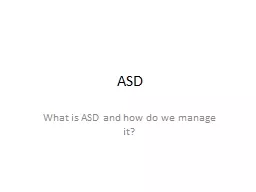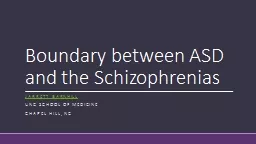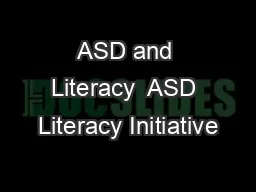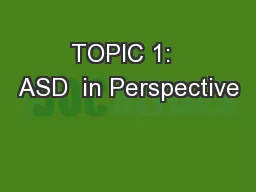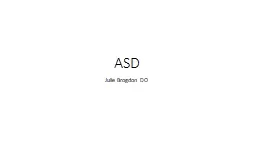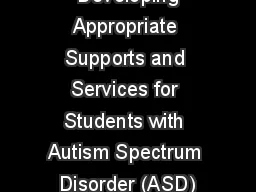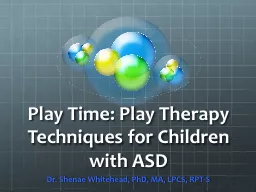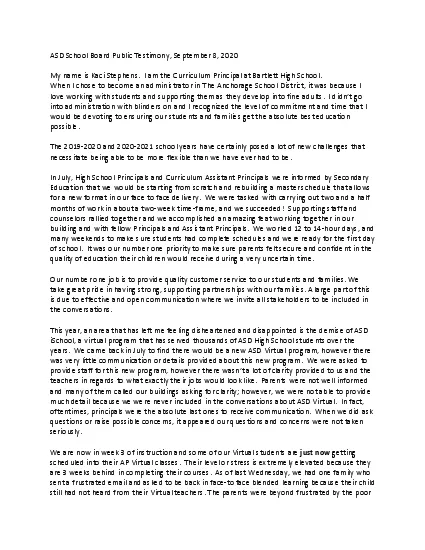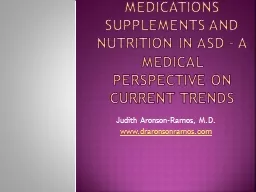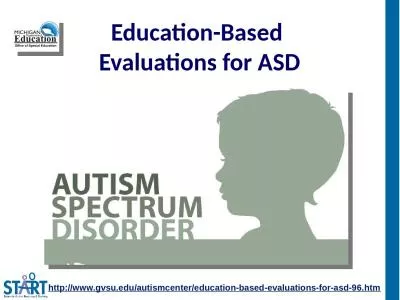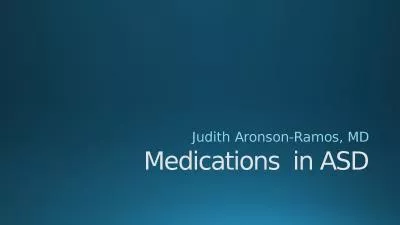PPT-ASD What is ASD and how do we manage it?
Author : myesha-ticknor | Published Date : 2017-05-23
What do you think it is Talk to your neighbour and share your experiences and knowledge Official Definition Autism spectrum disorder ASD is a condition that affects
Presentation Embed Code
Download Presentation
Download Presentation The PPT/PDF document "ASD What is ASD and how do we manage it?" is the property of its rightful owner. Permission is granted to download and print the materials on this website for personal, non-commercial use only, and to display it on your personal computer provided you do not modify the materials and that you retain all copyright notices contained in the materials. By downloading content from our website, you accept the terms of this agreement.
ASD What is ASD and how do we manage it?: Transcript
Download Rules Of Document
"ASD What is ASD and how do we manage it?"The content belongs to its owner. You may download and print it for personal use, without modification, and keep all copyright notices. By downloading, you agree to these terms.
Related Documents

